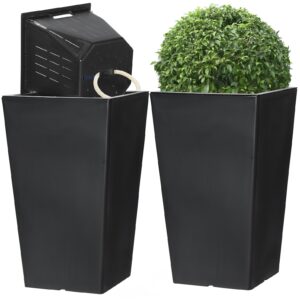Mistakes to Avoid When Purchasing a Mattress
Here are some pointers on what not to do while shopping around before we get into the specifics of purchasing a new bed. Our sleep specialist will go over some common misconceptions and errors in the video below.
Read More: best mattress
types of mattresses
If you’re just beginning your mattress search, you’ve undoubtedly noticed that there are an overwhelming amount of alternatives. Consider the many sorts of mattresses as a starting point to help you find your bearings.
There are five main types of mattresses: airbed, hybrid, latex, innerspring, and foam. The most well-known and historically the cornerstone of houses across the country are innersprings. However, various types of mattresses have become more and more popular in recent years.
The main reason these other mattress varieties have become more popular is that they provide a more dynamic performance. Along with being more accessible and inexpensive, they have grown in popularity along with the internet mattress market.
Gaining an understanding of the fundamentals of each of these kinds might help you carry on your quest for the greatest mattress.
Foam: There are no coils in these mattresses; all of the material is foam. They work well for side sleepers and couples because they often offer superior pressure relief, motion isolation, and body contouring. Memory foam is the most well-known type of foam utilized in these mattresses.
Innerspring: A few more layers and a coil-based support mechanism characterize an innerspring mattress. While innersprings provide some support, they frequently don’t relieve pressure well enough. They have less motion isolation and a bouncy sleeping surface. These are more popular with thrifty consumers due to their reduced price point.
Hybrid: The two main components of a hybrid are a thick foam comfort system and an innerspring support core. The comfort layers may consist of latex or foam, and in certain cases, a shorter coil layer known as micro-coils may be included. Depending on how precisely they are constructed, these mattresses may be an excellent fit for sleepers in any position and offer a combination of bounce and contouring with little heat retention.
Latex: A mattress is referred to be all-latex or true-latex when all of its layers are composed of latex rubber. We just refer to them as latex mattresses for the sake of simplicity. These have mild contouring but excellent bounce and endurance. Customers who care about the environment highly value them when they are created with natural and organic latex.
Airbed: The air chamber serves as the foundation for airbed construction. With the touch of a button, a built-in pump that can be operated by a smartphone or remote gives sleepers the maximum amount of firmness flexibility. Because each side of an airbed can be adjusted to a different hardness level, couples adore them.
Selecting a Mattress to Alleviate Back Pain
Although there are many possible reasons of back discomfort, one that shouldn’t be disregarded is an unsupportive mattress. Appropriate support can keep back discomfort from developing in those who don’t currently have it, and the correct mattress can improve comfort and cushioning for those who do.
In addition to other mattress requirements and preferences, the type of back discomfort must be taken into account while selecting the finest mattress. Certain back pains are acute and flare up quickly. We refer to this as acute back discomfort. In some cases, the discomfort lasts for a long time and is referred to as chronic back pain. Back issues might progress from acute to chronic, for example, after an accident.
A person suffering from severe back pain might just require a mattress to provide brief relief. This might entail changing their sleeping posture or utilizing additional pillows. Greater care may be required for persistent back discomfort, such as selecting a firmer or softer mattress. Maintaining the appropriate alignment of the spine while you sleep may be achieved by finding the ideal balance between comfort and pressure reduction.
Where a person gets back discomfort may also influence which mattress is best for them.
Back Pain in the Lower Back
The lowest five vertebrae (L1–L5) in the lumbar region are affected by lower back pain. It is the most prevalent kind of back pain and a major factor in American medical visits. This area of the back is susceptible to twisting and bending, which can damage the surrounding muscles and the spine.
Lower back pain can result from sleeping incorrectly for extended periods of time. This may happen to side sleepers if their hips and shoulders aren’t supported, which will force their entire spine out of alignment. It can happen to back and stomach sleepers because to an overly hard or soft mattress that presses against the lumbar spine’s natural curve.
Generally speaking, mattresses that can soften the impact points of side sleepers should be in the Medium Soft to Medium Firm range. Those who sleep on their backs or stomachs should choose Medium Firm to Firm mattresses with just minimal conforming.
Pain in the middle and upper back
Pain in the middle and upper back is far less prevalent. Because the architecture in these areas is more stable, twisting motions are less likely to cause sprains and strains. A physician should be seen if you experience pain in these locations since it may indicate more serious issues.
An excessive amount of strain in the middle or upper back can occasionally be caused by bad posture. An elevated risk of this type of discomfort can be mitigated with a pressure-relieving mattress that helps with spinal alignment. Ensuring sufficient support for the neck and upper spine can also be achieved by investing in a high-quality pillow with the appropriate loft.

